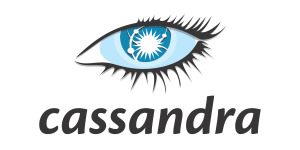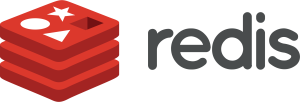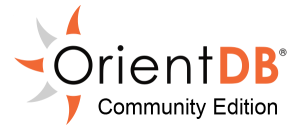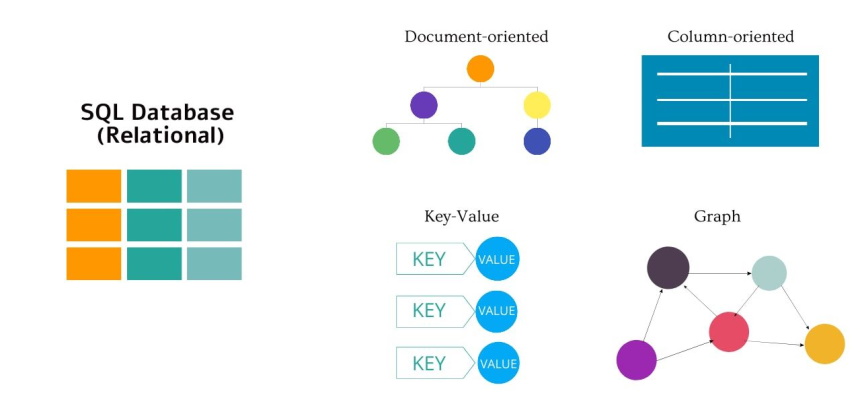8 Best No-SQL Databases to Power Your Business Applications and Data Storage Needs! (Spring 2023)
Our reviews of the best No-SQL databases available, guide on choosing one and answers to the frequently asked questions
With the ability to store and process vast data amounts at speed, NoSQL databases may be best positioned to handle the needs of a growing company. However, due to database technology improving over the years, there are more than a few NoSQL databases to choose from for your business, with perks and downsides differing from option to option.
Naturally, you’ll want the best NoSQL database for your business, and having reviewed a couple; we’re well-positioned to give you recommendations. In our evaluation of the prospects, we considered the type of NoSQL database, as well as other features such as fault tolerance, sharding, full-text search, etc., that determine its functionality and suitability for a particular business.Our reviews of the best No-SQL databases available, guide on choosing one and answers to the frequently asked questions
| Name | Nomination | Overall rating |
|
1. MongoDB With sharding, optimal load balancing, and compatibility with over 100 regions, MongoDB is a great long-term option with the potential to help you grow |
Editor’s Choice | 9.9 |
|
Apache Cassandra is a great column-oriented database with its replication, scalability, and fault tolerance, making a case for why it’s worth considering |
Best NoSQL Database for Read | 9.7 |
|
3. Redis With the ability to persist all writes to permanent storage, Redis allows users get to keep all their data and build from there as they scale |
Best in Memory NoSQL Database | 9.6 |
|
4. Apache HBase Apache HBase is one of the easier NoSQL databases to use and grow, with automatic failure support and an easy Java API for clients |
Best NoSQL Database to Learn | 9.4 |
|
With its ACID properties, Apache CouchDB is uniquely suited to large organizations that allow for multiple data input points |
Best NoSQL Database for Large Organizations | 9.3 |
|
6. Neo4j As a graph interface, Neo4J supports full ACID rules, two kinds of Java APIs, and even allows for UNIQUE constraints |
Best Graph NoSQL Database | 9.0 |
|
7. RavenDB RavenDB is one of the few with a slight learning curve thanks to a native profiler tool alongside a graphical user interface |
Best Document-Based NoSQL Database | 8.8 |
|
8. OrientDB OrientDB’s versatility is unmatched thanks to the fact that it’s a two-type NoSQL database that’s both document-based and graph-based |
Best NoSQL Database Use Case | 8.7 |
Top 8 No-SQL Databases Reviewed in Winter 2022
Features:
- Type: document-based
- Ad-hoc query support
- Replication for better data availability
- Sharding
- Optimal load balancing

MongoDB is our editor’s choice, thanks to its appeal to a wide range of users. It’s also compatible with over 100 other technologies, such as Microsoft Azure, Amazon Web Services, Google Cloud, etc. With its sharding and optimal load-balancing capabilities, we also noticed that accessing data is quick and easy no matter how many people are using the database at the same time. Also, with the replication feature, you almost always have a backup once you input data, even if there’s a fault in the database.
MongoDB is fairly similar to RavenDB as both are document-based databases. If you want something that’s more compatible with multiple other technologies, MongoDB is the option to go for, thanks to its compatibility with more than 100 regions. RavenDB is still a good option, but it might not be as compatible with as many cloud providers as the alternative. However, if it already supports the cloud provider you’re using, it might not be a deal breaker.
What we liked
- High-speed performance
- It’s very flexible and scalable
- Support for ad-hoc queries
- With sharding, you won’t struggle with large data sets
What could be better
- High memory usage
- Joins can be awkward
Features:
- Type: column-oriented
- Supports replication & Multi data center replication
- Scalability
- Fault-tolerance
- MapReduce Support
- Query Language

As the best NoSQL database for read data on the list, Apache Cassandra is column-oriented. The fact that it supports replication and multi-data center replication allows you to access data points quickly at whatever scale you’d like. Even when adding new machines, there’s no service interruption or downtime, and you can expect a higher read and write throughput the more machines you add. This makes it scalable to the size of your business, and like MongoDB, we also noted it to be fault tolerant.
Apache Cassandra is one of two column-oriented databases listed, with the other being Apache HBase. Another similarity is the ability to scale, although they do it differently. If you don’t know much about NoSQL databases, HBase may be an easier onboarding experience given the easy java API and automatic failure support. Otherwise, Apache Cassandra may be more suited to large data sets with features like fault tolerance and multi-data center replication.
What we liked:
- Very cost-effective
- Continuous data availability thanks to data replication and fault tolerance
- High performance
- Very low maintenance
What could be better:
- It’s tricky to move Cassandra data to relational databases
- Doesn’t fit transactional data
- Doesn’t support aggregates
Features:
- Type: key value store
- Programmability
- A module API for building custom extensions
- Persist all writes to permanent storage
- Horizontal scalability with hash-based sharding
- Replication with automatic failover

In our opinion, Redis is the best in-memory NoSQL database simply because all writes are persisted to permanent storage. Therefore, there’s little to no chance of you losing any information once it’s committed to the database. Horizontal scalability with hash-based sharding is another perk that will allow the database to grow alongside your business. Add the module application programming interface, and you can add even more functionality to the database to match your needs.
Redis is easily comparable to Apache HBase, given both offer APIs. However, HBase’s option is an easy java API for clients to work with, while Redis’ API is for building custom extensions. As such, you may need to have a fairly proficient programmer on your team to effectively use Redis, with the added benefit of adding extra functionality as you scale. However, if you want an easier-to-use platform, Apache HBase seems like the better pick, and you likely won’t struggle as much during the initial stages of use.
What we liked:
- Redis supports multiple programming languages
- It’s fast
- Fairly flexible data structures
- Zero downtime, even during maintenance
- Open source
What could be better:
- It’s RAM intensive and requires more computer resources
Features:
- Type: column-oriented
- Linearly scalable
- Automatic failure support
- Integrates with Hadoop
- Easy java API for client
- Data replication across clusters

If the Redis module API is a bit too advanced for you, Apache HBase comes with an easier-to-use java API; hence it made the cut for the best NoSQL database to learn. It’s column-oriented and linearly scalable. Also, the fact that it offers automatic failure support means you don’t have to be as tech-savvy as when you’re using other NoSQL databases. Finally, with data replication across clusters, your information is always safe, secure, and available for retrieval.
Apache HBase and Neo4J both support java APIs, so in some cases, they’re very similar. However, with Apache being a column-based NoSQL database, you can run limited analytics on some of the data in your database without consuming much of your computer’s resources. With Neo4J being a graph database, it’s optimized for analytics with capabilities to see various connections between the data elements. Each has its place in the market, with Apache being more well-rounded while Neo4J is specifically suited to some use scenarios, e.g., knowledge graphics, social networks, etc.
What we liked:
- It’s fast
- It’s scalable
- Fairly easy-to-use API
- It can easily handle large data sets
What could be better:
- There’s a slight chance of failure
- No built-in authentication
- Querying is a hassle
Features:
- Type: document-based
- Simple to replicate
- ACID properties
- Map/reduce system
- Eventual consistency
- HTTP API

In our opinion, Apache CouchDB is among the best for large organizations thanks to the multi-master replication. With it, data can be stored on any number of computers, and data can be updated on any terminal, and with its ACID properties, these changes will be evident in all terminals almost simultaneously. This makes it particularly suited to a server ecosystem. Also, it incorporates mobile applications and several other environments with challenging network infrastructures.
Like Redis, Apache CouchDB offers an API, but which of the two should you pick and why? It may depend on the type of NoSQL database you’re going for. If you want a key value store option, you should go for Redis. If you want something document-based, Apache CouchDB is better for your needs. It may also be dependent on the size of your organization, with CouchDB working better for larger companies thanks to its ACID properties.
What we liked:
- Simple interface
- Can store most types of data
- The HTTP API provides easier communication than other APIs
What could be better:
- Is resource intensive
- Database replication may fail
Features:
- Type: graph database
- Supports Indexes by using Apache Lucene
- Supports UNIQUE constraints
- Supports full ACID rules
- Exporting of query data to JSON and XLS format
- Supports two kinds of Java API

In our testing, we came to consider Neo4j among the top NoSQL graph databases available. As such, if you’re a data scientist looking for scalable analytics, this is the database for you. Even if the data is non-relational, it remains connected, allowing you to get quick responses to queries while still maintaining high data integrity. With that, it’s possible to look at data and infer meaning as well as make better predictions using the data that’s already available.
Compared to the rest of the list, Neo4J is the only graph database on the list. As such, if you’re looking to infer conclusions from available data, it could be the ideal option. Furthermore, it supports UNIQUE constraints, full ACID rules, and even two kinds of java API, which is functionality you’re unlikely to get with others. That said, it can be fairly limited in how you use it.
What we liked:
- Extremely fast and responsive
- Intuitive to use
- Is efficient when handling large datasets
- Fairly easy to visualize data
What could be better:
- It can be a hassle to configure the database
- It only supports java-based libraries
Features:
- Type: document-based
- MapReduce
- Full-text search
- Includes a native profiler tool
- Graphical User Interface (GUI)
- ETL replication and pull replication

As for RavenDB, our team ranks it among the best document-based NoSQL databases with a native profiler tool for your data. Furthermore, with its graphical user interface, it might just prove easier to use than some of the alternatives listed. Add the full-text search and making accurate queries, and finding stored data should be a cakewalk. There’s also little chance of losing much of the data with both ETL replication and pull replication being available.
RavenDB is the same type of NoSQL database as our editor’s choice, MongoDB. However, one major difference is the type of replication they do. Also, the user interfaces may differ and with RavenDB being significantly easier to use. As such, if you or your team want easier integration and use, it should be the better choice. Functionality-wise, you may be better off with MongoDB in the long run.
What we liked:
- Fast, responsive performance
- A simple and effective management studio
- Automatically tracks records
What could be better:
- It may require other products to unlock full functionality
- No test sharding is available unless you pay for the license
Features:
- Type: document-based/graph-based
- Stores up to 120,000 records per second
- Zero configuration multi-master architecture
- Can run on any platform without configuration and installation
- Low TCO

OrientDB’s ability to run on most platforms without having to be installed or configured makes it the defacto best NoSQL database use case. You won’t have to do much during the onboarding phase, and you get a document-based and graph-based database in one. Add the fact that it can store up to 120,000 records per second, and you don’t have to worry about performance, recording data, or even retrieving it. Lastly, the total costs of ownership make it attractive even to users with lower budgets to work with.
OrientDB is another unique offering on the list compared to the rest since it can be classified as both a document-based and graph-based option. Therefore, if you want something extra to the functionality of the Neo4J option, it should be an excellent option. The same is true if you value the functionality of another document-based database like RavenDB in addition to something else. The fact that it doesn’t need onboarding also sets it apart from other competing NoSQL databases.
What we liked:
- Updates are regular
- Multiple servers ensure it’s fast
- Versatile
What could be better:
- There have been a few minor issues with bugs
- Poor documentation
Things to Consider
You can only get one NoSQL database at a time, which means you’ll have to choose. Unfortunately, it’s not a decision you can make randomly, and the consequences of choosing wrongly can be dire and far-reaching for your business or project. So, how do you choose?
The criteria may differ from buyer to buyer since needs are likely to be just as diverse. However, if you really want to ensure you identify the best NoSQL database for your needs, you might need to take notes from the buying guide below. But first, a quick look into NoSQL databases and their uses.
NoSQL Databases: Their Uses
With NoSQL databases, you get a hierarchical file folder system that allows for non-relational and unstructured data to be stored.
On the other hand, traditional, relational data-based management systems use structured query language(SQL) syntax. These allow for relational tables, which can work if you’re dealing with small batches of data. However, they can also lead to lower system response times which isn’t acceptable in some situations.
For more information about SQL, you may want to consider the best SQL books so you can learn all about the nitty gritties, including commands and much more.
Nevertheless, the lack of structure and JOINS in NoSQL databases allows your system to process larger batches of data without slowing down. Additionally, it’s easier to scale when the organization grows, and you have even more data to deal with.
Also, NoSQL is sometimes called not only SQL implying some support for SQL-like languages alongside something else. In fact, NoSQL database functionalities allow for easy storage and retrieval of semi-structured, unstructured, polymorphic, and even structured data.
As such, NoSQL databases are excellent options for Big data. There’s also JOIN functionality in SQL databases which allow for tabular data to be combined. However, with NoSQL databases being inherently non-tabular, JOIN functionality, which typically slows down your system, may be unnecessary.
Ultimately, you want to turn to NoSQL databases when you’re dealing with Big data where the data isn’t structured, or there are no strong relationships. Furthermore, it works well when the database needs to constantly scale, such as when lots of information and data gets uploaded daily.
In a content management system, for instance, data may include images, text, audio, video, etc., with NoSQL better suited for such non-relational data at scale. Also, if the data set is large enough to be slowing down traditional SQL systems, it may be time for NoSQL databases.
Mobile apps also have billions of users, with scalability an important part of keeping up with service delivery. A relational database may struggle with retrieving data, while NoSQL databases can do it at speed, making them ideal.
Types of NoSQL Databases
 As for the types of NoSQL databases available, there are four, including document-based, key-value stores, column-oriented, and graph databases, all of which have featured on the list above.
As for the types of NoSQL databases available, there are four, including document-based, key-value stores, column-oriented, and graph databases, all of which have featured on the list above.
Document-based databases like MongoDB, our editor’s choice, store data as JSON, XML, or BSON documents. Notably, there’s not much of a difference between the storage format and the version used in an application which allows for little to no translation when accessing the documents.
Document structures can also be customized to better match an application, and if your application requirements change, it’s easy to rework the documents to match them. Document-based databases are used in eCommerce and trading platforms alongside mobile app development as well.
Key-value stores are simple NoSQL databases with a structure that looks a lot like a relational database with dual columns. This is because each data element has two components, i.e., the key/attribute name and a value. Key values are common in shopping carts, user profiles, and user preferences.
One example of a key-value store database is Redis.
Column-oriented databases, as implied by the name, have data sets organized by columns. Perks of these databases include the ability to read and run analytics on a few columns with little memory consumption. You also get fast reads.
That said, columns are typically the same type which allows for more efficient compression.
Downsides include how they write data which can lead to consistency issues since multiple write events on a disk are necessary.
Graph databases like Neo4J focus equally on both the data and the connections or relationships between the data elements. These connections will be stored alongside other pieces of data. Consequently, you can search for connections between various pieces of data without the overheads of JOINs associated with relational databases.
Consequently, you can get much faster results which is why graph databases are used in social networks, knowledge graphs, and even fraud detection.
How to Choose the Best NoSQL Database
Ultimately, how you choose the best NoSQL database comes down to intended use, although there may be some commonalities in what different people look for. Speed and performance is a great example of a commonality, and no matter how you intend to use the database, speed is one of the first things you look at.
Scalability also influences your database choice since you want something that grows with you and your business. Naturally, the bigger it grows, the more essential something like multi-user concurrency becomes, so include that as well.
The programming language used in the API may also affect the scalability of the platform and its ability to integrate with other regions. Java seems to be fairly common, although there are others as well. Nevertheless, if you go for something like Apache HBase with the java API, our list of best java books may prove beneficial in the long run.
Lastly, check for high data availability as a result of replica sets; otherwise, you may experience downtime when trying to query for specific data points.
With that done, it may be time to look at the type of NoSQL database and whether it’s suited to your particular use scenario.
FAQ
What is a NoSQL database?
Traditional SQL databases stored information in relational tables, while NoSQL databases have been described by some as similar to a hierarchical file folder system. Data is non-relational, and the lack of structure allows these databases to process larger batches of data faster.
Also, due to the inherent design of NoSQL databases, information is distributed into numerous data stores allowing for faster response times even when dealing with Big data.
Which is faster, SQL or NoSQL?
NoSQL is faster than SQL when dealing with Big data.
Our Verdict
MongoDB stands out the most as our editor’s choice, with support for multiple regions and features that allow for unlimited scalability. It’s also quite stable and has a reputation for being reliable.
Apache Cassandra is quite cost-effective and offers continuous data availability once you’re set up. This is due to its replication features and resulting fault tolerance.
Redis is another option among our top three picks. With data written to permanent storage, there’s little risk of losing it, not to mention the programmability aspect that should allow you to improve functionality over time. That said, you may need to learn to code or hire someone else for the job.
https://www.mongodb.com/scale/types-of-nosql-databases
https://onlinebusiness.umd.edu/blog/types-of-database-management-systems/
